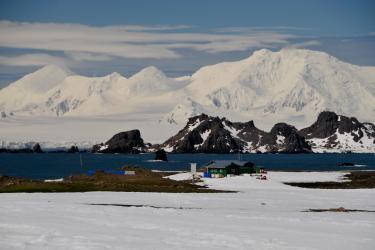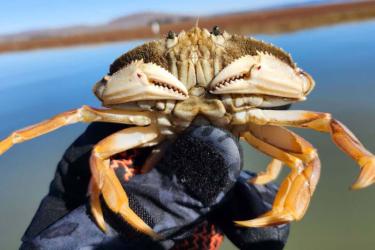Since 2011, we have collected over 21,000 gonad samples from 39 groundfish species and work collaboratively across seven sampling platforms.
Why is reproduction important to study?
Reproduction is a fundamental process of population dynamics. Changes in reproductive success can translate directly into population growth or decline. Understanding the factors that influence the timing of maturity and spawning capability is essential when measuring reproductive potential and spawning stock biomass.
What We Do
The Reproductive Ecology Program provides accurate measurements of reproductive capability for stock assessments on an annual basis. Our research prioritizes species scheduled for upcoming assessments. It focuses on determining the timing of maturity and investigating factors that influence spawning success (e.g., seasonal batch fecundity, multiple broods, abortive maturation, skipped spawning). Tracking spatio-temporal trends in reproduction will provide valuable information to measure reproductive output and enhance fisheries models accurately.
We process and histologically assess gonad samples collected from the West Coast groundfish surveys: the West Coast Groundfish Bottom Trawl Survey, the Southern California Shelf Rockfish Hook and Line Survey, and Acoustic Hake survey) in the lab to determine:
- Stage of maturity.
- The intensity of atresia (i.e., the proportion of nonviable eggs).
- The presence of post-ovulatory follicles (i.e., whether or not the individual had recently spawned).
We calculate size and age at maturity for stock assessment models to predict spawning output and biomass.
We can also compare the number of biologically mature individuals (i.e., fish that are physiologically mature but not necessarily spawners) versus functionally mature (actual spawners in a given year). This comparison allows us to understand reproductive dynamics within a population, and how it might vary across regions, species, or over long time scales.
Looking Ahead
This data set now spans multiple years across an extensive geographical range. It has provided a unique opportunity to explore ecosystem-based fisheries management (EBFM) concepts (i.e., spatio-temporal changes in maturity, the timing of spawning, and reproductive development). We have evaluated this for multiple groundfish species that span the entire U.S. west coast, and found differences in maturity and skip spawning between important biogeographical regions or landmarks (Cape Mendocino and Pt. Conception, California) for several species.
Also, there is evidence of short- and long-term temporal differences in reproduction, where seasonal or regional variability in ocean productivity can affect a species ability to spawn successfully.
Incorporating environmental and spatio-temporal factors affecting reproduction is necessary for developing fisheries models that accurately reflect changes in the environment, lessen overestimates of reproductive potential, and lead us closer to ecosystem-based fisheries management.
Collaborators
Maturity Assessment Reproductive Variability and Life History Strategies (MARVLS) NOAA working group
Southern California Shelf Rockfish Hook and Line Survey
West Coast Groundfish Bottom Trawl Survey (WCGBT)
Oregon Department of Fish and Wildlife (ODFW)
Washington Department of Fish and Wildlife (WDFW)
International Pacific Halibut Commission (IPHC)
At-sea Hake Observer Program (A-SHOP)
Fisheries Engineering Acoustic Trawl Team (FEAT)
Related Publications
Min, M.A., Head, M.A., Cope, J.M., Hastie, J. Flores, S. in review. Limitations and applications of macroscopic maturity analyses: A comparison of histological and visual maturity staging in multiple west coast groundfish species.
Head, M., Cope, J.M. and Wulfing, S.H. submitted to Environmental Biology of Fish. Investigating spatial and temporal variation in reproductive trends in aurora rockfish (Sebastes aurora), using a flexible non-asymptotic model to estimate functional maturity. Canadian Journal of Fisheries and Aquatic Sciences.
Head, M.A., Stokes, G.L., Thorson, J.T. and A.A. Keller. 2016. Improved estimation of maturity ogives and skipped spawning rates in U.S. West Coast groundfish using double-reads and measurement error models. Fisheries Research, 179: 251 – 258. https://doi.org/10.1016/j.fishres.2016.03.004
Frey, P., Head, M.A. and Keller, A.A. 2015. Maturity and growth of darkblotched rockfish, Sebastes crameri, along the U.S. west coast. Environmental Biology of Fish, 98: 2353 – 2365 (December 2015).
Head, M.A., Keller, A.A. and Bradburn, M. 2014. Maturity and growth of sablefish, Anoplopoma fimbria, along the U.S. west coast (Canada to Mexico). Fisheries Research 159: 56 – 67. DOI: 10.1016/j.fishres.2014.05.007.







